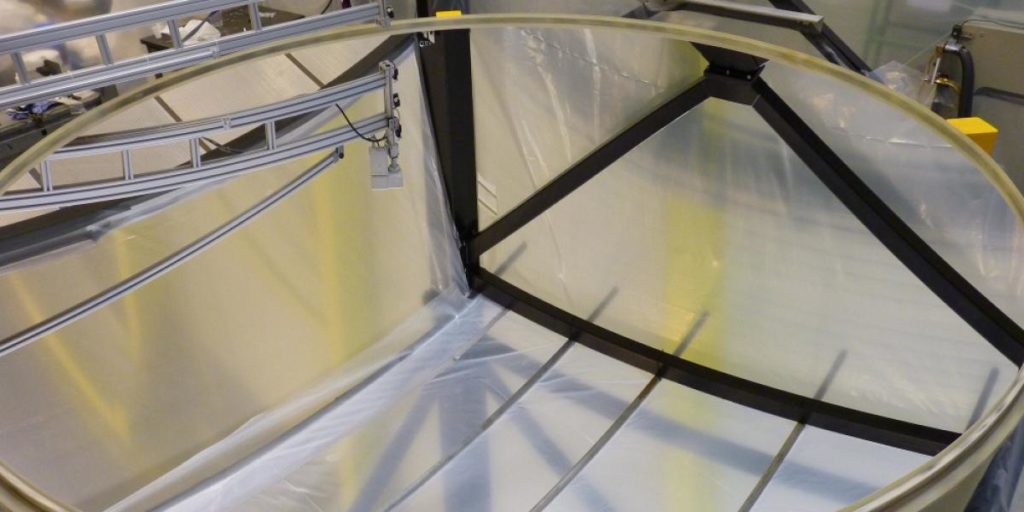
The newly commissioned International Liquid Mirror Telescope (ILMT) in the central Himalayas is designed to survey the strip of sky passing overhead each night, allowing it to identify transient or variable objects such as supernovae, gravitational lenses, space debris and asteroids.
The ILMT—located at Devasthal Peak at 2,450 metres altitude in the central Himalayan range—houses a four-metre rotating mirror coated with a thin film of liquid mercury.
“Rotating once every eight seconds, the mirror floats on a film of compressed air about 10 microns thick,” explains Dr. Paul Hickson, Professor in the Department of Physics & Astronomy and a pioneer in liquid mirror technology. “By way of comparison, a human hair is approximately 70 microns thick. The air bearings are so sensitive that even smoke particles can damage them. A second air cushion prevents the rotor from moving sideways.”
Liquid-mirror telescopes take advantage of the fact that the surface of a rotating liquid naturally takes on a parabolic shape, which is ideal for focusing light. The telescope is designed to survey the strip of sky passing overhead each night, allowing it to identify transient or variable objects such as supernovae, gravitational lenses, space debris and asteroids.
Dr. Hickson perfected liquid-mirror technology over the years while developing the Large Zenith Telescope at UBC’s Malcom Knapp Research Forest in Maple Ridge, B.C., which, at that that point, was the largest liquid-metal mirror ever built. He and his lab were able to apply that knowledge to the design of the ILMT air system.
“When regular science operations begin later this year, the ILMT will produce about 10 GB of data every night, which will be quickly analyzed to reveal variable and transient stellar sources,” says Dr. Brajesh Kumar, ILMT project scientist at ARIES. The 3.6-metre Devasthal Optical Telescope located nearby, with the availability of sophisticated spectroscopic instruments, will allow rapid follow-up observations of newly detected transient sources with the ILMT.
The ILMT collaboration includes researchers at the Aryabhatta Research Institute of Observational Sciences, and the Indian Space Research Organization, the University of Liège and the Royal Observatory of Belgium in Belgium, Poznan Observatory in Poland, the Ulugh Beg Astronomical Institute of the Uzbek Academy of Sciences and National University of Uzbekistan in Uzbekistan, the University of British Columbia, Laval University, the University of Montreal, the University of Toronto, York University and the University of Victoria in Canada.
The telescope was designed and built by the Advanced Mechanical and Optical Systems and the Centre Spatial de Liège in Belgium.
Read the full story at the Faculty of Science website.
Through Strategy 6: Collaborative Clusters, UBC is providing researchers with the support needed to collaborate internally across UBC and externally with local and global partners.